
Zephyranthes Lily Flower
Erect, bushy annuals, grown for their ovate or elliptic, sometimes lance-shaped, multi-coloured leaves, to 20cm or more long, which vary in colour from green or purple to brilliant crimson or maroon, often suffused with gold, rose-pink, and bronze in the different cultivars. Insignificant green or red flowers are borne in often thickened and flattened, terminal or axillary cymes, from summer to early autumn.
...more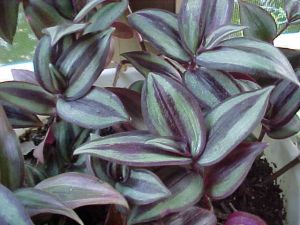
Zebrina Pendula
Tradescantia zebrina is a trailing evergreen perennial to 15cm, with lance-shaped, deep bronze-green leaves with two longitudinal silvery bands above, purple beneath; rosy-purple flowers in small terminal clusters appear sporadically throughout the year
...more
Water Lillies
Nymphaea are rhizomatous, submerged aquatic perennials with floating, rounded leaves and showy, sometimes fragrant, cup- or bowl-shaped flowers in a wide range of colours, held on or above the water and followed by submerged, berry-like fruits
...moreWater Heliconia
T. dealbata is an evergreen, marginal aquatic perennial forming a clump of long-stalked, erect, narrowly ovate leaves to 40cm in length, covered with white powder, and slender stems bearing panicles of purple flowers 2cm across .
...more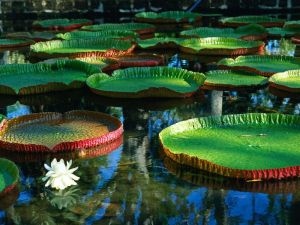
Victoria regia
Victoria amazonica is well known for its huge circular leaves, which are often pictured with a small child sitting supported in the centre as a demonstration of their size and strength. The species is highly prized as an ornamental, despite having somewhat particular requirements for successful cultivation.
...more
Verbena White Flower
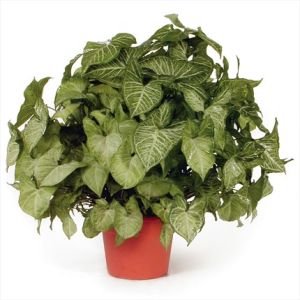
syngonium plant
Syngonium podophyllum is an houseplant, it is typically grown for its attractive ornamental foliage which changes shape as the leaves mature. Juvenile leaves (to 5.5†long) are ovate with heart-shaped bases and sometimes with silver variegation. Leaves mature to arrow shape. Later leaves become pedate (to 14†long), each with 5-11 leaflets. Tiny green to greenish-white flowers on a spadix are surrounded by a greenish-white spathe (to 4.5†long).
...more
Snake Plant
Sanseviera are stemless, erect, rhizomatous, succulent perennials with evergreen, ovate or strap-shaped, leathery leaves often attractively marbled, and short spikes of small fragrant tubular greenish-white flowers
...more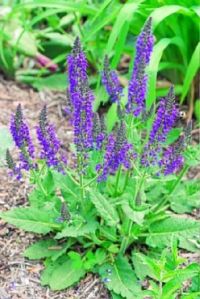
salvia flower
Bushy, erect annual or short-lived perennial with red, purple, or green stems, and ovate to ovate-oblong, light green leaves, to 15cm long. Some cultivars have red or purple-green leaves. Tassel-like, pendent, terminal and axillary panicles, 45-60cm long, of crimson-purple flowers are borne freely from summer to early autumn.
...more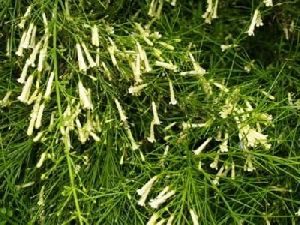
Russelia
Native to Mexico, coral plant or coral fountain (also sometimes firecracker plant) is a deciduous, asparagus-like, many-branched, tropical subshrub (to 4’ tall) with trailing rush-like 4-angled stems and bright red tubular firecracker-like flowers (to 1.25†long) in drooping terminal cymes. Blooms freely from late spring to frost. Needle-like medium green leaves (to 1/2†long). Flowers are attractive to hummingbirds.
...more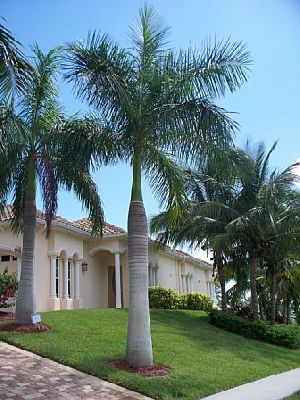
Royal Palm
Slender-stemmed palm with a terminal tuft of pinnate, rich green leaves, to 60cm long, comprising 21-40 linear to lance-shaped leaflets. Tiny yellow flowers are borne in erect, simple or branched panicles, 15-30cm long, from spring to autumn, followed by small, spherical black fruit. Height 2-3m, Spread 1-2m. Native of Mexico, Guatemala.
...more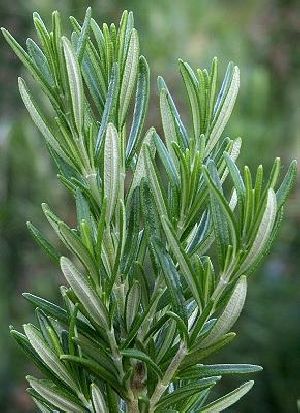
rosemary herbs
Upright to rounded, dense, bushy, aromatic, evergreen shrub with linear, leathery, dark green leaves, to 5cm long, white-felted beneath. Whorls of tubular, 2-lipped, purple-blue to white flowers, 1cm long, are produced from the upper leaf axils from mid-spring to early summer, and often again in autumn.
...more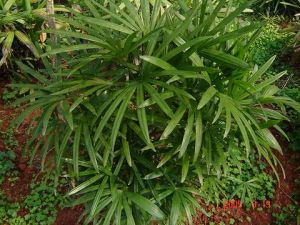
Rhapis Humilis
Single-stemmed palm with a slender trunk, at first bearing a fibrous webbing of old leaf bases, then smooth. The leaf-blades are light green above and silvery grey beneath, 40-60cm across, and borne on stalks of the same length. Produces fragrant yellow flowers, 6-8mm across, in panicles to 2m or more long, in summer. Height to 5m, Spread 1.5-2.5m. Native of Haiti, E. Cuba.
...more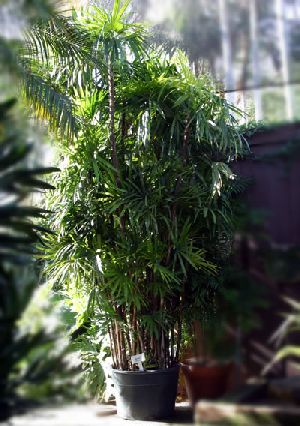
Raphis Excelsa
Medium-sized palm with a slender, smooth trunk ringed by old leaf scars. Arching, pinnate, dark green leaves, 2-4m long, comprise many narrow, linear, abrupt- or ragged-ended leaflets. From spring to summer, bears cup-shaped cream flowers in panicles to 1.5m long, followed by crimson fruit in persistent yellow calyces. Height 10-15m, Spread 3-7m. Native of Australia.
...more
Pitunias Flower
Freely branching, usually compact, low-growing annual or short-lived perennial with linear-lance-shaped, slightly hairy, grey-green leaves, 3cm long. In summer, produces tiny, cross-shaped, slightly cupped, scented, white, occasionally pale purple-pink flowers in rounded, corymb-like racemes, 2.5-8cm across.
...more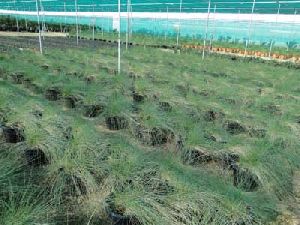
Pink Muhly Grass
Pink Muhly Grass is a clumping grass that grows to 3 feet tall and wide. The flowering clusters add about 1 foot, giving the plant a height of 4 feet when in bloom. The narrow leaf blades are a glossy dark green color, and grow to 1.5 inches long. Flower spikes are a deep pinkish-red color; with a loose, open appearance that give the tops of the plants a feathery look. These flowering stalks appear in fall and early winter, although bloom periods vary slightly with temperature.
...more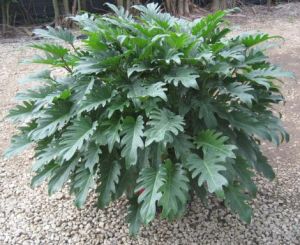
Philodendron Xanadu
Philodendron Xanadu grows in pots or in the ground forming large, neat looking clumps. Native to Australia, Xanadu is an evergreen shrub that usually grows to about 2 or 3 feet. In recent years it has become the most popular Philodendron in Florida. The medium-size indented leaves are glossy green in color. Leaves may grow from 12 to 18 inches long. Xanadu needs to be watered regularly in summertime and should be reduced in winter. For best growth, plant in light shade to partial sun. One of our best indoor plants .
...more
Papaya Plant
The papaya plant has an erect branchless trunk 6-20 ft (1.8-6.1 m) tall, and a palmlike head of foliage at the top. The trunk remains somewhat succulent and soft wooded, and never develops true bark. It is ringed with prominent scars from previous leaf stems and contains an acrid milky latex sap. The leaves are deeply incised and lobed, up to 24 in (61 cm) across and borne on 24 in (61 cm) petioles. The smooth-skinned fruits are green, yellow, orange or rose colored, and can weigh as much as 20 pounds (9.1 kg), but typically are about a pound (0.5 kg). They hang on short stalks in clusters directly from the trunk beneath the umbrella of giant leaves. Papayas flower and fruit simultaneously throughout the year. Normally dioecious in the wild, hermaphroditic papaya cultivars have been developed. Several variations of the Solo cultivars, or Hawaiian papaya, are the most common papayas in American grocery stores; these are monoecious cultivars, only 6-8 ft (1.8-2.4 m) tall, which produce small, single serving fruits. Mexican papayas produce fruits weighing up to 10 lbs (4.5 kg), on much larger plants.
...more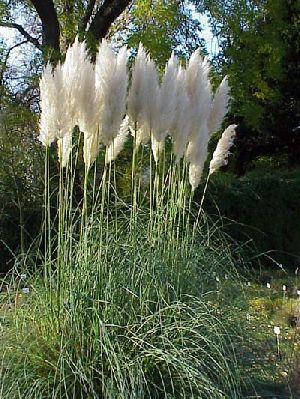
Pampas Grass
Densely tufted, clump-froming, evergreen, perennial grass with arching, glaucous, mid-green leaves, to 2.5m or more long. In late summer, silky, silver, often pink- or purple-flushed spikelets are borne in pyramidal to oblong panicles, 45-90cm long, on erect stems. Height 2.5-3.0m, Spread 1.5m or more. Native of Temperate South America.
...more
Marrigold Flower
Fast-growing, erect, sometimes spreading annuals with inversely lance-shaped to spoon-shaped, softly hairy, aromatic leaves, to 15cm long. Daisy-like, single or double, orange, yellow, gold, cream, or apricot flowerheads, to 10cm across, many with dark disc-florets, are borne profusely from summer to autumn.
...more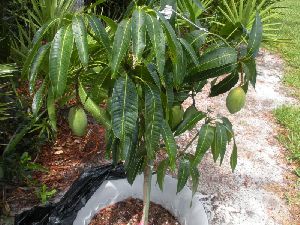
Mango Tree
The mango tree is erect, 30 to 100 ft (roughly 10-30 m) high, with a broad, rounded canopy which may, with age, attain 100 to 125 ft (30-38 m) in width, or a more upright, oval, relatively slender crown. In deep soil, the taproot descends to a depth of 20 ft (6 in), the profuse, wide-spreading, feeder root system also sends down many anchor roots which penetrate for several feet. The tree is long-lived, some specimens being known to be 300 years old and still fruiting. Nearly evergreen, alternate leaves are borne mainly in rosettes at the tips of the branches and numerous twigs from which they droop like ribbons on slender petioles 1 to 4 in (2.5-10 cm) long. The new leaves, appearing periodically and irregularly on a few branches at a time, are yellowish, pink, deep-rose or wine-red, becoming dark-green and glossy above, lighter beneath. The midrib is pale and conspicuous and the many horizontal veins distinct. Full-grown leaves may be 4 to 12.5 in (10-32 cm) long and 3/4 to 2 1/8 in (2-5.4 cm) wide. Hundreds and even as many as 3,000 to 4,000 small, yellowish or reddish flowers, 25% to 98% male, the rest hermaphroditic, are borne in profuse, showy, erect, pyramidal, branched clusters 2 1/2 to 15 1/2 in (6-40 cm) high. There is great variation in the form, size, color and quality of the fruits. They may be nearly round, oval, ovoid-oblong, or somewhat kidney-shaped, often with a break at the apex, and are usually more or less lop-sided. They range from 2 1/2 to 10 in (6.25-25 cm) in length and from a few ounces to 4 to 5 lbs (1.8-2.26 kg). The skin is leathery, waxy, smooth, fairly thick, aromatic and ranges from light-or dark-green to clear yellow, yellow-orange, yellow and reddish-pink, or more or less blushed with bright-or dark-red or purple-red, with fine yellow, greenish or reddish dots, and thin or thick whitish, gray or purplish bloom, when fully ripe. Some have a turpentine odor and flavor, while others are richly and pleasantly fragrant. The flesh ranges from pale-yellow to deep-orange. It is essentially peach-like but much more fibrous (in some seedlings excessively so-actually stringy); is extremely juicy, with a flavor range from very sweet to subacid to tart. There is a single, longitudinally ribbed, pale yellowish-white, somewhat woody stone, flattened, oval or kidney-shaped, sometimes rather elongated. It may have along one side a beard of short or long fibers clinging to the flesh cavity, or it may be nearly fiberless and free. Within the stone is the starchy seed, monoembryonic (usually single-sprouting) or polyembryonic (usually producing more than one seedling).
...more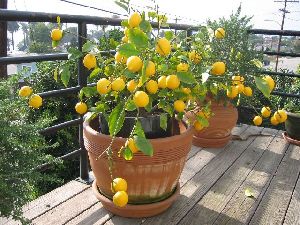
Lemon Plant
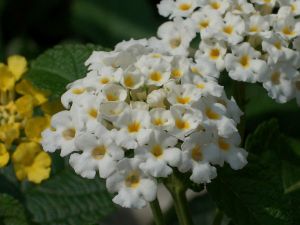
Lantana - White
L. camara is an evergreen shrub with sometimes prickly stems bearing wrinkled, ovate leaves and terminal clusters of salver-shaped flowers 1cm across, opening yellow and ageing to red, from late spring to autumn, It can spread invasively in frost free areas, but appears to be somewhat less invasive than its close relative Lantana camara. Genus name comes from the Latin name for viburnum. This species was reportedly discovered in Montevideo, Uruguay, hence the specific epithet.
...more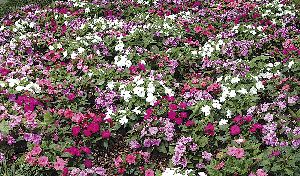
Impatiens Flowers
Evergreen, bulbous perennial with semi-erect, oblong, mid-green, basal leaves, to 90cm long. From spring to summer, bears umbels of 2-5 scented white flowers, 8-12cm across, with long, narrow petals and wide cups; the upper 3 stamens of flower curve downwards, the lower 3 are straight.They are commonly grown in part shade to shade areas, with little tolerance for full sun.
...moreBe first to Rate
Rate ThisOpening Hours